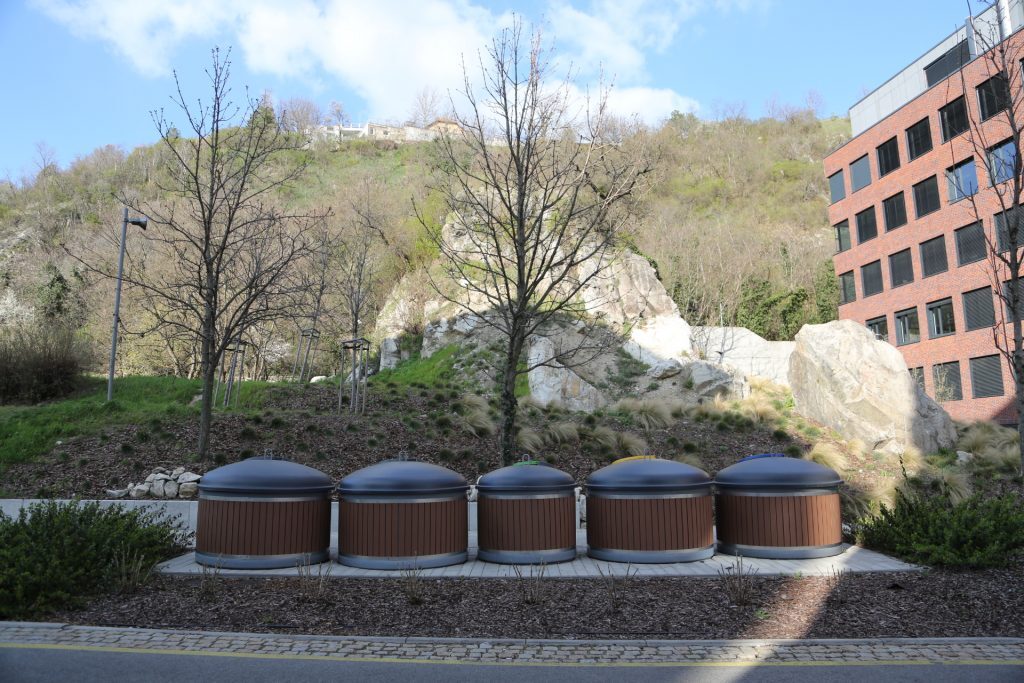Recently, we have been approached by a British magazine looking for our opinion on the role of technology in the current environmental challenges. We have decided to share some of the answers with you:
1. Many councils and organisations in the UK and globally already have some form of waste property management technology tool in place. How can yours be considered that innovative?
“Some form of waste property management technology” is a very broad term. According to our experience from the 42 countries in which we operate, using truly smart waste management (the one, that would enable using real data to manage waste efficiently, improve environment and quality of service) is extremely rare. Nowadays, smart waste management starts with proper bin assets management and tagging that supports easy identification, tracking and control of the bins. Sensoneo waste bin tags are fully controlled via Sensoneo mobile app while the customers can use our AI tool to digitize their bin assets real-time in the fields simply by placing the mobile phone against the bin.

Other levels of smart waste management refer to efficient waste collection, optimal waste collection routes and vehicle loads. This is powered by Sensoneo smart sensors that are able to monitor any type of waste including liquids in any type and size of bins. This way we can ensure only full (i.e. nearly full) containers are collected. Sensoneo Smart Route Planner navigates the vehicles via shortest and safest routes while maximizing utilization of vehicles. Sensoneo sophisticated software cleverly combines data about the capacity and type of vehicles to ensure that the vehicle comes back to the depo completely full.
Incentive programs are another specific part of the “smart waste management tools” family – Sensoneo Watch Dog tool which is soon to be launched, provides with automatic service verification of pick up (waste collection), and more importantly, confirms in detail the actual volume of waste in the bin at the moment of collection. This bulletproof data are to be used as the basis for the deployment of “pay as you throw” billing models. In combination with Sensoneo bin tags, we have in place absolutely reliable, fair and easy to deploy the solution to motivate and bill citizens/customers according to the real volume of waste produced.

2. Is there a danger that the only households who will install a solution such as yours are the only households that take climate change seriously? And that the most polluting citizens will just continue to ignore sustainability?
We believe that the deployment/installation of such a solution should be flat – at least per city zone level/customer level. We believe (and we design the solution this way), that the smart waste management system has to be beneficial for everyone – city (i.e. service provider), citizens and environment. It should bring the data that would make the city understand the real production of waste and the tools to manage it more efficiently. We highly appreciate all “zero – waste” and “pro-climate” initiatives that motivate people to produce less waste and behave more environmentally-friendly, however, these affect the specific (and rather marginal) part of the population only. To make a real change, we need to establish tools which would affect also the rest. We believe that with the right data gathered automatically, you have the power to do it.
3 . Why should we use technology when it comes to organizing our waste?
To affect the majority, you have to put in place something that is easy, automatic and accurate. And technology does exactly that. It has to be easy and quick to identify the owner of the bin, to find out how much waste does he produce, to check whether he pays the bills etc.
It has to be easy to evaluate the efficiency of waste collection routes and frequencies, bin infrastructure in the city in terms of capacity, placement and type of bins. Without data, we cannot identify overutilized stands and streets, understand the ratio between solid/mixed waste and recyclables and address education accordingly.
Distribution and placement of bins are one of the key challenges when it comes to managing waste in the city. Accurate data help city managers to identify the right locations and capacities to meet the real requirements.
4. Should we just simply consume less instead of relying too heavily on technology to manage our sustainability problems?
It should go hand in hand. Awareness on the environmental crisis, appeals on consciousness, minimalism and zero-waste approach are all very important and should be part of the education of the public on how to deal with the climate-crisis issues.
However, how can we check that we actually consume less? How do we identify those who ignore these goals? We have to put in place tools that motivate everyone. The goal of smart waste management is to ensure that the waste that is already produced is handled as reasonably as possible.




